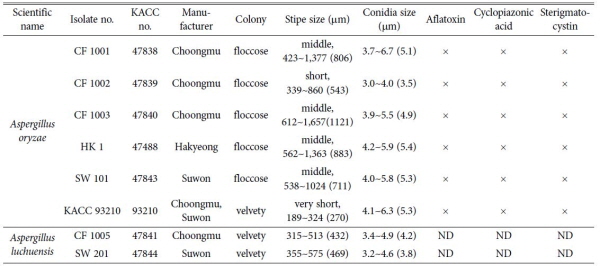Abstract
We examined taxonomic characteristics and safety of eight
Acknowledgements
This study was carried out with the support (Project no. PJ01124801) of National Academy of Agricultural Science, Rural Development Administration, Republic of Korea.
Figures & Tables



